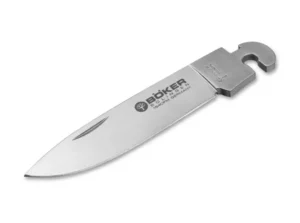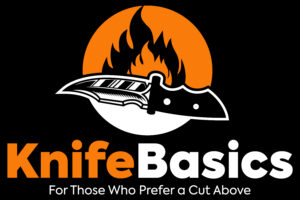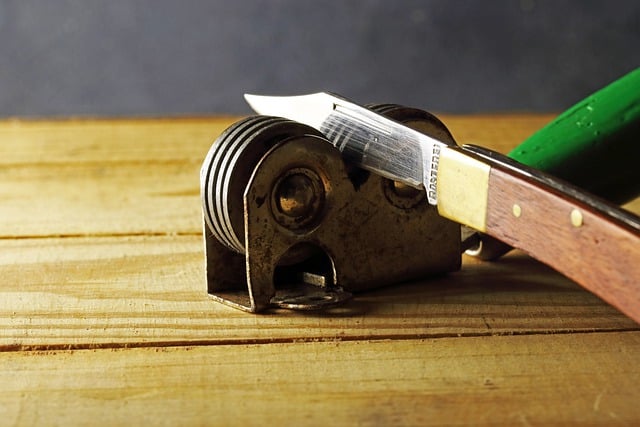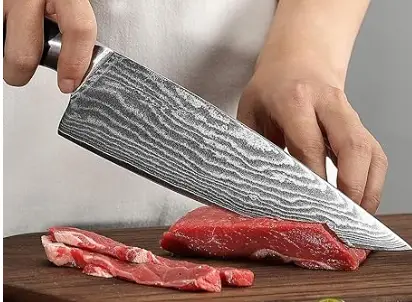Are you tired of your kitchen knives losing their sharpness too quickly? Look no further. In this article, we unveil the secrets of CPM154 knife steel and why it is a cut above the rest in terms of superior performance.
Renowned for its high wear resistance and impeccable edge retention, CPM154 knife steel is the go-to choice for professional chefs and avid home cooks. With its unique composition of iron, carbon, vanadium, and chromium, this steel offers exceptional hardness and corrosion resistance, ensuring that your knives stay sharp and rust-free for longer periods.
But what sets CPM154 apart from other knife steels? Its fine grain structure and advanced manufacturing process give it a remarkable ability to maintain a razor-sharp edge even after extensive use. Whether you’re slicing through meats, dicing vegetables, or filleting fish, CPM154 knife steel guarantees precision and effortless cutting. So, if you’re looking to invest in high-quality kitchen knives that will stand the test of time, CPM154 knife steel is the answer.
Join us as we delve into the secrets behind its superior performance and discover why it is the preferred choice for professional chefs and discerning cooks alike. At the end of this article, you’ll be convinced that CPM154 knife steel truly outshines the competition.
What is CPM 154 Steel?
CPM 154 is the CPM version of the latter and therefore exhibits the advantage of fine grain structure and enhanced machinability, wear resistance, corrosion resistance, and toughness.
Because of its properties, CPM 154 is widely used in the knife-making industry to make bushcraft knives and Every Day Carry knives. Also, it is used in other industries to produce bearings, cutlery, and tools to be used in highly corrosive environments.

CPM 154 Steel Composition
- Carbon C 1.05%: Increases the edge retention, hardness and tensile strength. It also improves steel resistance to wear, abrasion and corrosion.
- Chromium Cr 14.00%: Chromium Increases hardness, tensile strength and corrosion resistance of a blade.
- Manganese Mn 0.50%: improves the strength and hardness of steel. When the steel isheat treated, hardenability is improved with increased manganese
- Molybdenum Mo 4.00%: increases toughness and hot hardness. It also improves hardenability and forms carbides for wear resistance.
- Silicon Si 0.80%: Increases strength and heat resistance.
- Phosphorus P 0.03%: Improves machinability and hardness.
- Sulfur S 0.03%: Improves machinability.
- Tungsten W 0.40%: used as an alloying ingredient due to its high melting point, hence improving perfomance of steel in high heat.
- Vanadium V 0.40%: Inhibits grain growth during elevated temperature processingand heat treatment, which enhances strength and toughness of steel. It also forms carbides that increase wear resistance.
Properties of CPM 154 Steel
CPM 154 Steel Hardness
CPM 154 steel has a hardness of 58-62 HRC as per the Rockwell hardness scale, which is a good hardness level. However, the exact hardness varies with the heat treatment used by the manufacturer.
This steel can attain a hardness of 62 HRC with suitable heat treatment. Because of this hardness level, CPM 154 is categorized as high-end steel and used by reputable knife-making brands to produce high-quality knives.
CPM 154 Steel Toughness
CPM 154 offers decent toughness because it is not very hard steel. Steel can never give you both hardness and toughness. However, this steel gets a good balance of hardness and toughness. With its toughness, it does not break or chip easily, and it is because of this property, it is a good choice for making outdoor knives.
CPM 154 Steel Edge retention
One of the areas of excellence for CPM 154 is its edge retention which is associated with the high hardness level. The steel holds an edge for a long time, relieving you from the stress of everyday sharpening.
CPM 154 Steel Wear resistance
CPM 154 knives are long-lasting. These knives can withstand wear and tear from sharpening and outdoor use. Being high-end steel, the knives produced are expensive but worth the cost because they can serve you across generations. The credit for excellent wear resistance goes to the high carbon content in its composition.
CPM 154 Steel Corrosion resistance
Another advantage of CPM 154 steel is that it offers good corrosion resistance. The steel contains 14 percent Chromium which makes it stainless steel. It is not entirely corrosion-resistant, but it puts a good fight against rust and stains.
To enhance the corrosion resistance of this steel, invest in proper care and maintenance. This involves washing and drying the blades after use, which will take at most 2 minutes of your time.
Sharpening CPM 154 Steel.
Being hard steel, you must be worried how hard it is to sharpen CPM 154. So, is the steel hard to sharpen? Getting a sharp edge with CPM 154 is easy; according to Crucible, grindability of CPM 154 has been improved more than even 440C. This makes it easier to sharpen and work with.
CPM 154 knife steel vs other steels
Which is better, CPM 154 or 154CM? (CPM 154 vs 154CM)
With Crucible improved production process of CPM 154, it greatly improves toughness, retains a sharp edge longer, and is easier to work with in terms of grinding.
Crucible’s CPM 154 production process greatly refines the grain structure of the steel by making it more homogeneous, fine and increasing the dimensional stability. These attributes positively impact toughness and make it is easier to machine and grind than 154CM and Grade 440C.
While both steels are stainless steel and will resist corrosion and rusting better than most non stainless steel. CPM 154 stainless steel offers moderately improved performance over 154CM. Overall, CPM 154 stainless steel is better than 154CM stainless but comes in at a higher price.
CPM 154 steel equivalent is Swedish Damasteel produced RWL 34 stainless steel.
CPM 154 vs S30V
CPM 154 steel and S30V steel are both produced using the same process. Their alloy compositions are slightly different, with S30V containing more vanadium and added tungsten. The added elements contribute to better edge retention and corrosion resistance, respectively. Vanadium aids in the formation of vanadium carbides, while tungsten improves hardness and corrosion resistance even at a higher temperature.
Depending on the heat treatment, both S30V and CPM 154 can be hardened to the same HRC. When hardened to the same Rockwell hardness S30V steel is better than CPM 154 knife steel in edge retention and corrosion resistance.
CPM 154 knife will, on the other hand, offer better toughness and be less prone to chipping and cracking.
CPM 154 vs 440C
CPM 154 steel is better steel than 440C steel; it offers better performance in corrosion resistance, toughness, edge retention, and machinability. The better performance in corrosion resistance is due to more chromium elements in its alloy than that of 440C stainless steel.
The edge retention is enhanced by a higher Rockwell hardness of CPM 154 over 440C. The Crucible CPM production process also enhances the grain structure of CPM 154, giving it better edge stability while maintaining higher toughness. A CPM 154 knife blade will thus resist chipping and cracking better than a 440C knife blade.
CPM 154 stainless steel has high carbide volume than 440C stainless steel. The only downside to CPM 154 blade steel is that it might be more expensive than 440C.
Despite this, you will still get a sharp edge even with the most common abrasive tools out there; CPM 154 Rockwell hardness does not require hard abrasive to sharpen.
CPM 154 vs D2
CPM 154 has more chromium elements in its composition than D2 making it stainless steel. In contrast, D2 tool steel is considered semi-stainless steel. It does not meet the amount of chromium elements to make it stainless steel. A CPM 154 knife will thus resist corrosion and rusting better than D2 steel.
The Crucible CPM process has also refined the grain structure of CPM 154, giving it better wear resistance and toughness. CPM 154 offers twice the toughness and wear resistance of regular D2 steel but falls short of the improved CPM D2 steel. A CPM 154 blade will resist chipping and cracking in tough applications than D2 steel.
In edge retention, D2 tool steel beats CPM 154 knife by a slight margin; the added performance in edge retention and stability can be attributed to the extra vanadium element, which allows the formation of hard vanadium carbides that are great for hardness and edge retention.
CPM 154 vs M390
CPM 154 knife steel is produced by the crucible industry, whereas M390 is produced by Bohler Uddeholm. Bohler M390 is a premium stainless steel with the excellent edge retention and corrosion resistance.
M390 steel is better than CPM 154, it is in the ballpark of other premium steels like CPM 20CV and CTS 204P. Bohler M390 steel can offer excellent wear resistance and edge retention while maintaining its corrosion resistance property.
Frankly speaking, you will get better performance in almost all aspects with the premium and more expensive M390 steel blade than a CPM 154 blade. The only area where CPM 154 beats M390 steel is toughness. This, however, is by a slight margin; M390 steel toughness is more comparable to the 440C discussed above.
M390 blade steel will be more challenging to sharpen than CPM 154, and you will require diamond stone to sharpen it. However, the edge retention is excellent, and you won’t have to sharpen it as often as CPM 154 knife steel.
Is CPM 154 good blade steel?
For the end-user, it will be hard to notice the difference between 154CM and CPM 154 for daily use kinds of tasks. However, I’d advise picking up CPM 154 due to the improved toughness; you never know when you will need it.



